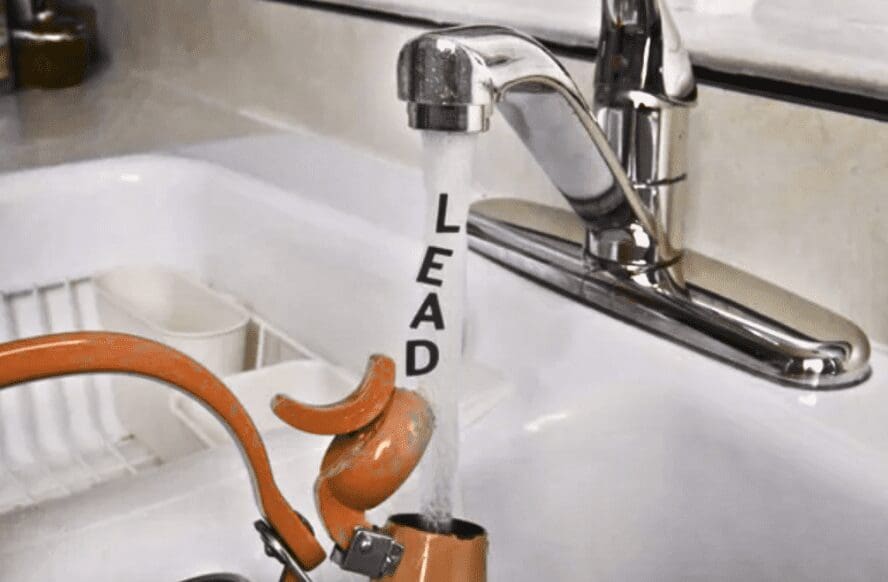The city of Wilmington is asking the public to help crack down on lead contamination in water.
City water customers in Wilmington and New Castle County will be receiving a postcard with a QR code that links them to the survey to help identify and report lead water service lines on their private properties or inside their homes and businesses.
For those eager to report and have not received the mailed survey quite yet, they can participate in the survey online here.
The survey has information to help residents distinguish the type of metal their pipes are made from (lead, copper, galvanized steel or plastic), as well as facts on why lead is harmful and how it’s historically been used in plumbing materials, how lead contamination end up in water, the contamination levels that are healthy and dangerous to drink and more.
The survey also tells parents how they can protect their children. Young children are especially susceptible to lead poisoning, which can have terrible effects on their cognitive development.
Wilmington’s Water Division is currently conducting an inventory of its own municipal water service system, looking for lead lines, and will report the results to the Environmental Protection Agency by Oct. 16, 2024.
Here’s a look at what residents will get in the mail:
The issue of lead contamination is not new in the First State.
In Oct. 22, dozens of schools were identified as having dangerous amounts of lead in their water.
This was the result of a $209,000 federal grant that allowed the Department of Education to begin a sampling initiative in 2020 to identify the levels of lead within drinking water at schools.
Although in many cases, the harmful water was found in bathroom sinks and non-drinking water, several schools had to shut down their water supply and instead provided water bottles and water coolers for drinking.
RELATED: William Penn among 22 schools with elevated levels of lead in water
Anything water with more than .015 milligrams of lead per liter of water is dangerous, according to the Environmental Protection Agency.
Last year’s school water testing report drew some backlash and criticism, however, because it used untrained school staff members to conduct the sampling.
RELATED: DOE owns lead testing blunder, expects new results by May
So, in December 2022, the state used $1.5 million to conduct a new round of sampling, with a completed, published report released in September, this time with more accurate data.
Some district, like Red Clay Consolidated, hired an independent group to test for lead in water at district schools. Red Clay worked with Batta, an environmental lab company that conducts tests for lead in water.
In Wilmington, water service lines are pipes that connect the city’s water mains to water meters or connect water meters to interior plumbing.
Lead pipes were banned in 1986, but it was commonly used for water service lines before then, many of which still exist today.
The Environmental Protection Agency’s new regulations require that lead service lines be identified in the nation’s public water systems, as well as in private homes and businesses.
The city also reminds residents that even if they find lead in their home or business, or if the city finds a lead service line leading to a customer’s water meter, it does not mean anyone has been exposed to lead.
That’s because Wilmington uses a corrosion control program that greatly reduces the possibility that lead from service lines could end up in the drinking water.
“We need the public’s help identifying lead service lines,” said Kelly Williams, Wilmington’s Commissioner of Public Works. “The more that citizens take part in the survey to help us learn how many lead lines there are, the more likely it is that we can develop a plan in the future to get lead out of our lives.”
If a customer believes they have identified lead in their home or business, the city asks that they follow the instructions on the survey to set up an appointment with the city.
If the city then finds a lead service line leading up to a customer’s water meter, the customer will be informed of the findings, provided with assistance on how they can reduce their chances of lead exposure and receive additional water tests to make certain their water continues to be safe.
The state has also made efforts to eliminate lead paint, as that can also harmful.
Senate Bill 9, sponsored by Sarah McBride, D-Wilmington, was signed in the summer.
RELATED: State looks to rectify effects of lead paint with new bill
It creates a process for health officials to identify and remediate homes that contain exposed lead paint, which includes screening every residential rental property in Delaware.
Wilmington City Council members and New Castle County Council members representing Wilmington have joined statewide advocacy groups Action for Delaware’s Children and Lead Free Delaware in calling on Gov. John Carney to invest $15.5 million in his proposed
budget for the upcoming fiscal year to begin reducing lead poisoning in Delaware’s young children.


Raised in Doylestown, Pennsylvania, Jarek earned a B.A. in journalism and a B.A. in political science from Temple University in 2021. After running CNN’s Michael Smerconish’s YouTube channel, Jarek became a reporter for the Bucks County Herald before joining Delaware LIVE News.
Jarek can be reached by email at [email protected] or by phone at (215) 450-9982. Follow him on Twitter @jarekrutz and on LinkedIn
Share this Post









